
Sony Bravia 7 review: this Mini LED TV is our new favorite for PS5 gaming
This is the Mini LED to get if you want a 4K resolution at 120Hz, near OLED-level contrast and fantastic speakers
Pros:
✅ ⚫⚪ Near OLED-level contrast in a Mini LED TV
✅ 💡 Highlights bright enough to make you squint
✅ 🌈 Naturalistic color reproduction
✅ 🔉 Dedicated mid-range speaker drivers deliver loud & clear dialogue
✅ 📺 Netflix & Prime Video calibrated mode optimizes picture for streaming
✅ 🎮 Gaming at 4K 120Hz is responsive and smooth
Cons
❌ 🪩 In-room reflections can get distracting
❌ 🤏 Narrow viewing angles
❌ 🔌 Only two 4K 120Hz gaming ready HDMI 2.1 ports
❌ 💸 $600 price increase over Sony’s preceding X90L 4K TV
🏆 Review score: 4 out of 5
The Shortcut Review
The Sony Bravia 7 is a direct Sony X90L replacement equipped with a Mini LED backlight that adds hundreds more lighting zones for a brighter picture and much higher contrast. It’s a correction to our biggest frustration with the backward fully array backlight of the X90L, which was otherwise our favorite TV for PS5 gaming – until now.
For the most part, it's a straight upgrade, albeit with a big price jump from $1,199 to $1,799. The Sony Bravia 7’s new Mini LED backlight adds hundreds more lighting zones that deliver highlights bright enough to make you squint while delivering almost an OLED level of contrast. The speakers are some of the best we’ve heard especially for making dialogue loud and clear. The only thing that mars this TV’s excellent image quality is unsightly in-room reflections and the narrowest viewing angles we’ve seen from an LCD TV in years. Still, in a small enough room, this isn’t a problem when you’re looking at the TV dead on.
Overall, the Sony Bravia 7 is an excellent Mini LED TV. It’s a fantastic TV for watching anything with its natural color rendition. Netflix and Prime Video calibration takes the pain of adjusting your TV settings for an optimal picture for everyday streaming. Meanwhile, PS5-specific features and a higher gaming brightness, make it well-suited for any games. Best of all, it’s $1,799, which makes it quite a bit cheaper than LG’s QNED or Samsung NEO QLED TVs (though you’ll still find TCL and Hisense TVs at a lower price).
Full Review
💡 Mini LED, maximum upgrade. The switch from a full array to a Mini LED backlight has given the Sony Bravia 7 a 790% increase in dimming zones and it shows. Brightness on this set maxed out around 1,750 nits with a 10% window. This makes the Bravia 7 twice as bright as most OLEDs, but it lags behind the searing 2,023 nits brightness I saw from the Samsung QN90D. The Sony Bravia 7 was still bright enough to make me squint my eyes at the flare scene in 1917.
👾 Even brighter Game Mode. Interestingly, the peak brightness went up slightly over 2,000 nits while using it in Game Mode and auto-low latency. So the Bravia 7 is even better tuned for HDR gaming, which makes it even better for playing games on the PS5 Slim – and PS5 Pro soon too, maybe.
😇 Deep blacks with a hair of haloing. On the flipside of brightness, you get an almost OLED level of contrast with this TV. Blacks look like almost pure darkness thanks to its more granular Mini LED backlight and new XR Backlight Master Drive technology controlling its 480 lighting zones. There is some slight haloing around bright objects and the white text on subtitles, but it was only mildly distracting to me.
💐 Natural colors. The Sony Bravia 7 excels most at producing naturalistic colors. Colors are vibrant and pop, but they don’t have any of the surreal or psychedelic hues that can sometimes seep into the picture of other TVs. Seeing colors rendered on the Bravia 7 makes watching content more like seeing through a window to another world as it helps make even movies like the absurdly fantastical Poor Things look realistic.
🎛️ Netflix & Prime Video calibrated mode. Multiple TV brands have adopted some version of a Filmmaker or Professional video mode that adjusts the TV's settings to display movies as the director intended for them to be seen. Sony has now gone one step further and added a calibrated mode that activates whenever you’re streaming anything on Netflix and Prime Video. When you start watching anything, the feature will choose between eight presets that adjust the TV’s settings like screen brightness, color temperature, and gamma. It’s a great aid for anyone who wants a more hands-off approach to calibrating their TV.
In this mode, the Sony Bravia 7 pulls metadata from either streaming service to apply different settings for movies, game shows, sports, and other types of content. Overall it works well and applies a look that complements what I’m watching, like any sports programming will get a brightened picture while movies are presented with more accurate color gradation and better HDR.
🪞 Dark mirror. I’ve had a lot of praise for the Bravia 7’s picture so far, but unfortunately, the physical anti-reflective on the screen isn’t the best we’ve seen from Sony. You’ll still see plenty of in-room reflections, including your own, during most dark scenes. Separately, the anti-reflection coating still does a decent job of diffusing sunlight and bright spotlights when it hits the screen at an angle. But your mileage may vary depending on how much bright light is pouring into your living room.
🏳️🌈⃤ Poor viewing angles. Viewing angles on the Sony Bravia 7 are also fairly poor. Take just a few steps to the side, and before you get past the screen’s edge, you can see the picture start to wash out. It’s surprising since I haven’t seen an LCD TV with narrow viewing angle issues in over five years.
🎮 Built for PS5 gaming. If there’s one thing the Sony Bravia 7 was made specifically for, it was gaming, especially with a PS5. It features the same Auto HDR Tone Mapping and Auto Genre Picture Mode we loved on the Sony X90L from last year. Auto HDR Tone Mapping automatically sets the TV’s maximum and minimum brightness to their proper levels. Meanwhile, Auto Genre Picture Mode optimizes your TV picture for whatever types of games you play without having to dig through menus whenever you switch from Final Fantasy XVI to God of War: Ragnarok.
🕹️ Maximum FPS. Simple gaming setup aside, the Sony Bravia 7 is a fantastic TV for gaming. I measured less than 10ms of input latency while gaming at 4K 120Hz. That’s significantly faster than the 18ms I recorded from the Sony X90L, but lags behind the 3ms seen on the Samsung QN90D. The Sony Bravia 7 also beautifully handles motion at 120Hz. It makes games look smooth as butter. Pulling off combos in Street Fighter 6 feels even more seamless when presented in silky animations. Meanwhile, the chaos of Call of Duty: Modern Warfare 3 small mosh pit matches feels even more frantic (and addictive) when all the action pops off at high speed. It makes all the sudden deaths to blunderbuss blast of the latest season even more instantaneous.
🫥 Curiously missing multi-view feature. Sony’s Game Menu has stayed relatively unchanged since last year. It still offers a great summary of your TV’s output and whether you’re actually playing at 4K 120Hz with ALLM and VRR turned on. However, Multi-View was supposed to be one new feature on Sony’s latest Game Menu and it basically would have let you watch YouTube while you game. Curiously, it seems to be a phantom feature, as it's missing from my Sony Bravia 7 unit. There’s also no coverage about it in other reviews and Googling the topic reveals a scant few Reddit posts also confused about the missing feature. I’ve asked Sony for any update on whether the feature was canceled or postponed and will update my Bravia 7 review when I hear back.
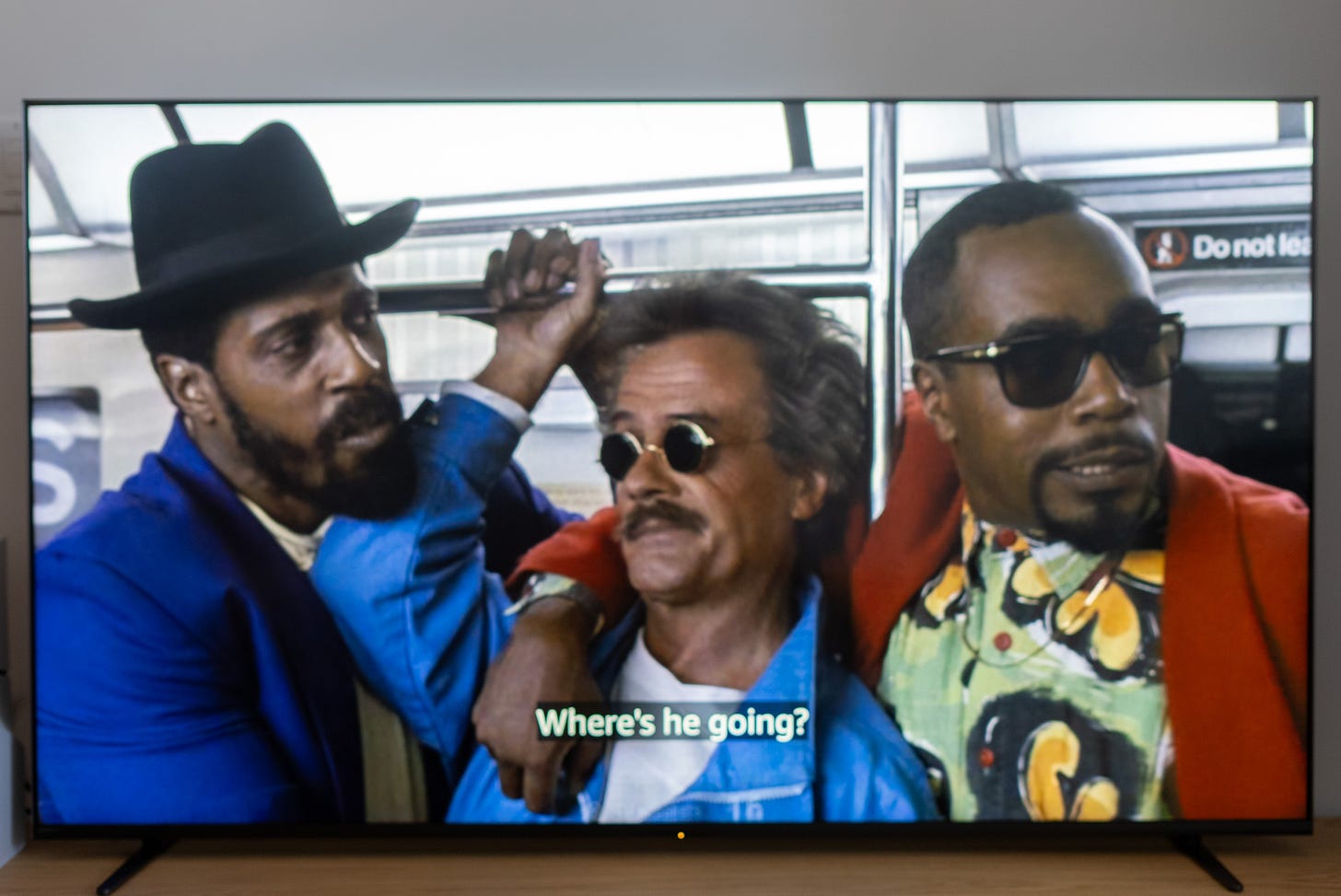
🔊 Acoustic Multi Audio. The Sony Bravia 7 features a robust sound system with dual woofers and mid-range drivers paired with sound-positioned tweeters. That’s a much better audio setup than the usual stereo speakers found on most thin-panel TVs like this. I’ve never heard clearer or louder dialogue than with the Sony Bravia 7 and that’s largely thanks to its dedicated mid-range drivers. They’re especially important since, when paired with a Sony soundbar or speakers, you can still use the TV’s built-in sound as a center channel with Acoustic Center Sync.
🗣️ Voice Zoom 3. Like the Samsung QN90D, the Sony Bravia 7 uses AI to separate and boost dialogue volume with a feature called Voice Zoom 3. Sony’s version gives you a lot of granularity with six levels of adjustment and it does a great job of raising the volume of dialogue while separating it from other sounds. Dialogue seemed 20% louder with Voice Zoom 3 set to Max. In my experience, it doesn’t ruin how shows and movies were originally mixed. Instead, it saves you from the hassle of constantly raising and lowering the volume whenever someone whispers a line followed by a thunderous explosion.
👆 Custom Google TV menus. While the Bravia 7 uses the same Google TV OS as Hisense and TCL TVs, Sony’s version has an extra coat of paint over its menus – and it’s noticeable. It’s easy to see where Google TV’s plain text menus stop and Sony’s more graphical and detailed menus start. The best part of Sony’s menus is they have a little tutorial description about TV settings while you adjust them.
🪨 This is heavy. You really need a TEAM lift to put the Sony Bravia 7 on your credenza or wall mount because it is HEAVY. At 62.39 pounds with its stand (59.75 pounds without), Sony’s TVs continue to be some of the heaviest to set up.
Should you buy the Sony Bravia 7?
Yes, if…
✅ 📺 You want to step up to a Mini LED TV without completely breaking the bank
✅ 🔊 You want a TV with fantastic built-in speakers
✅ 🎨 You want a TV that delivers high brightness, deep contrast, and great colors
✅ 🎮 You want a TV that’s literally been designed for PS5 gaming
No, if…
❌ 🛋️ You have a wide living room or TV viewing area. (Get the Samsung QN90D or an OLED TV like the LG C4 and Samsung S95D)
❌ 🔌 You need 3+ HDMI 2.1 devices and refuse to buy an A/V receiver. (Get the Samsung QN90D instead)
❌ 💰You’re looking for a sub $1,000 Mini LED gaming TV (Get the Hisense U7N or TCL QM7 instead)
Kevin Lee is The Shortcut’s Creative Director and has been reviewing tech for more than a decade, including going in-depth on TVs and soundbars.






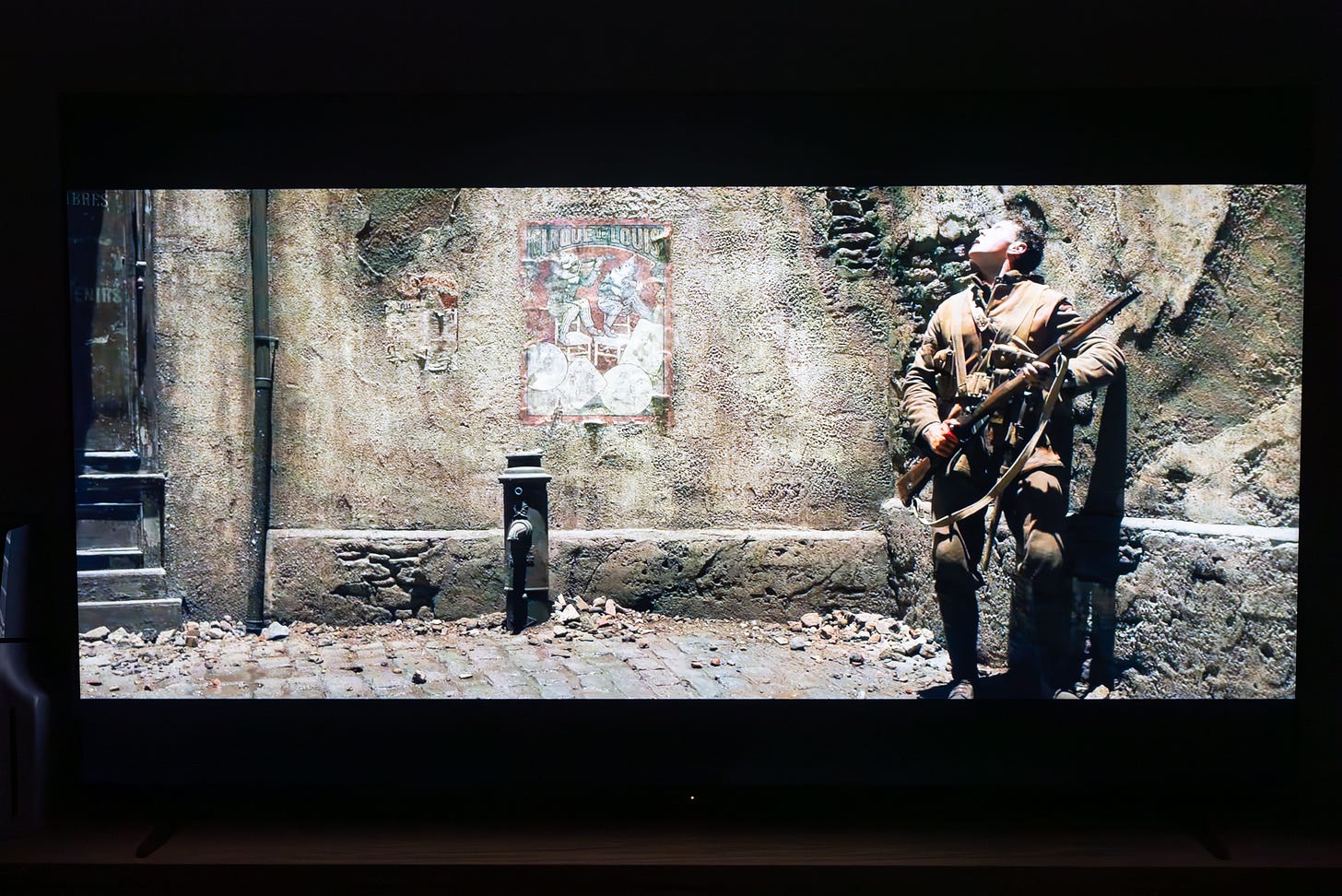
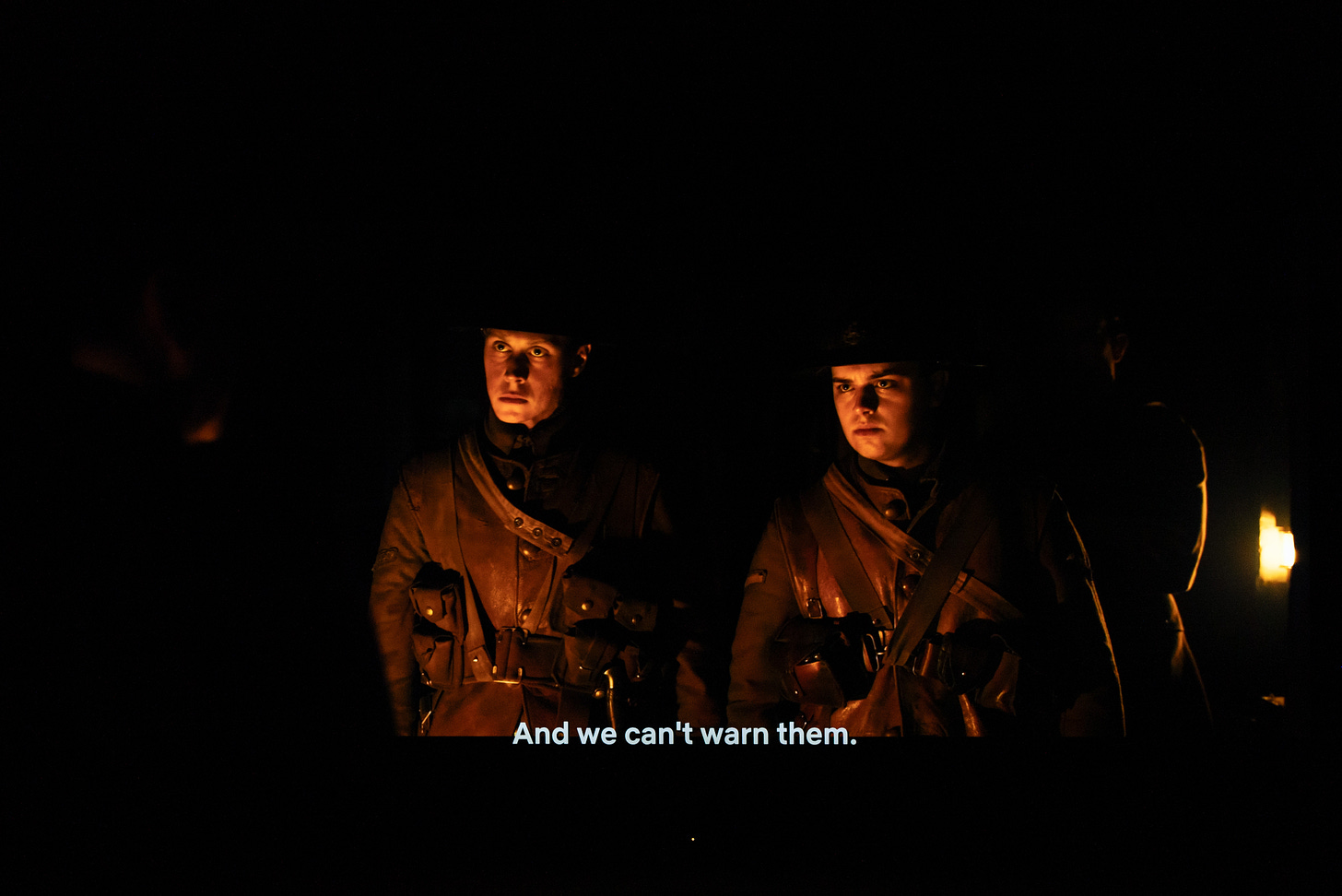
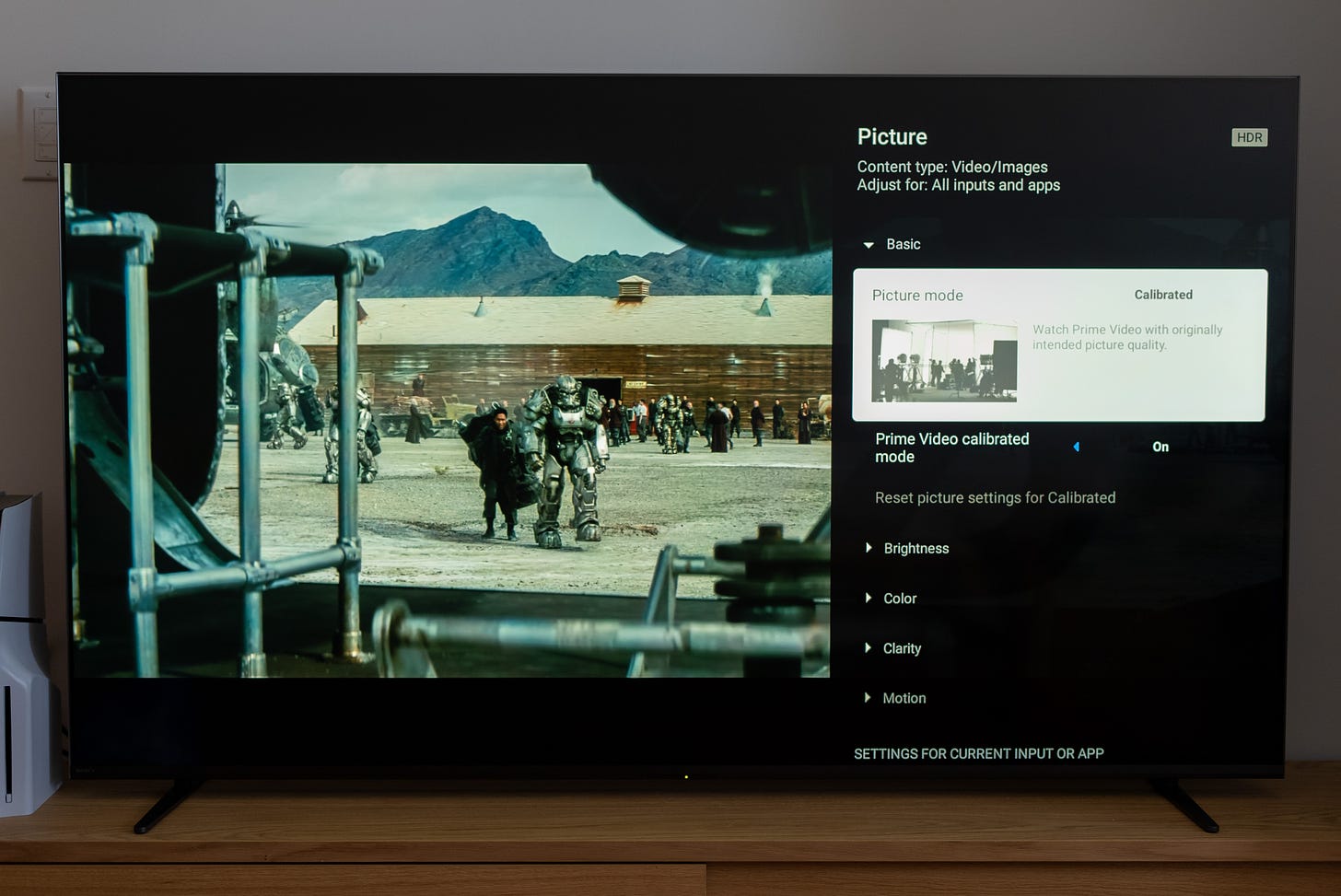
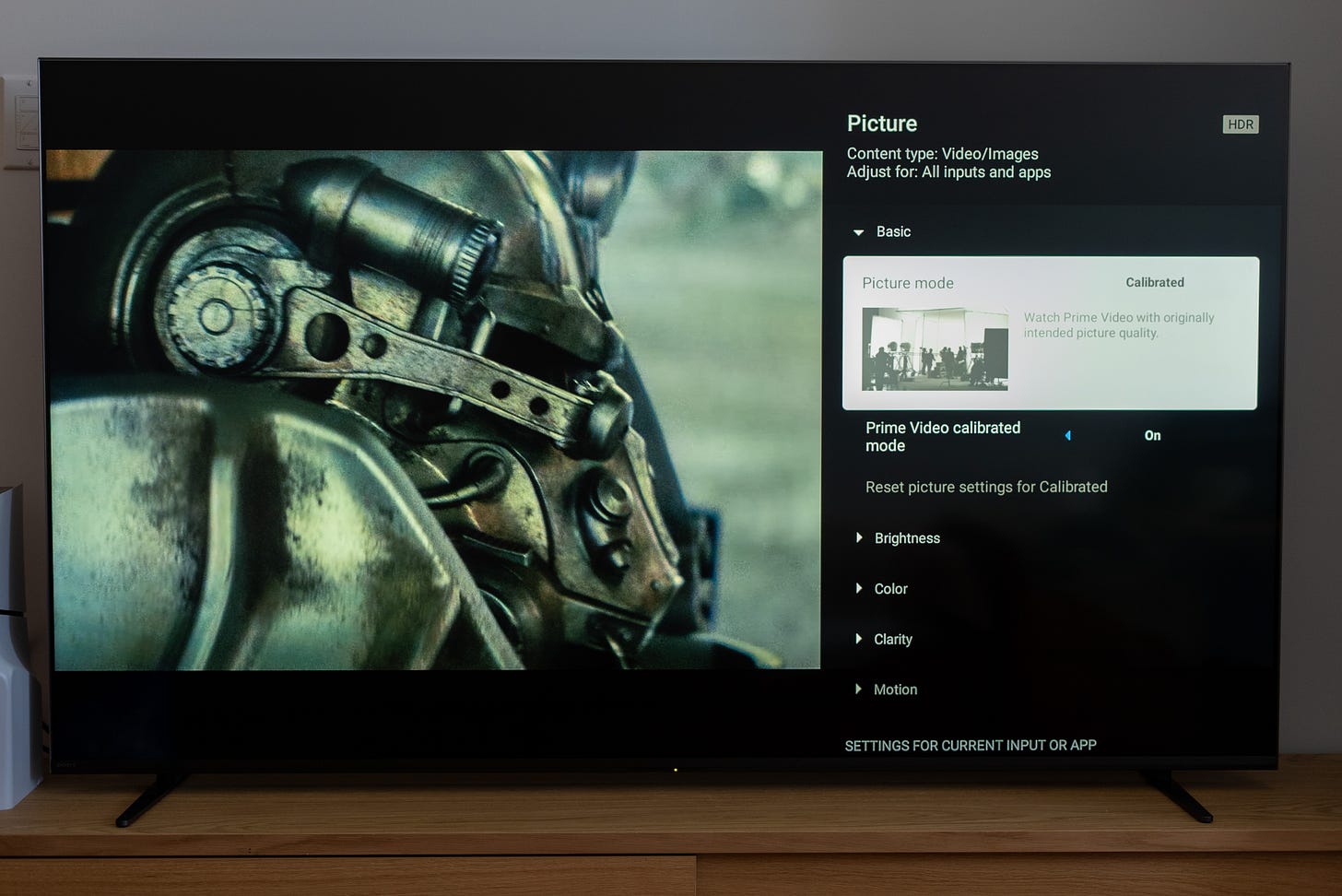
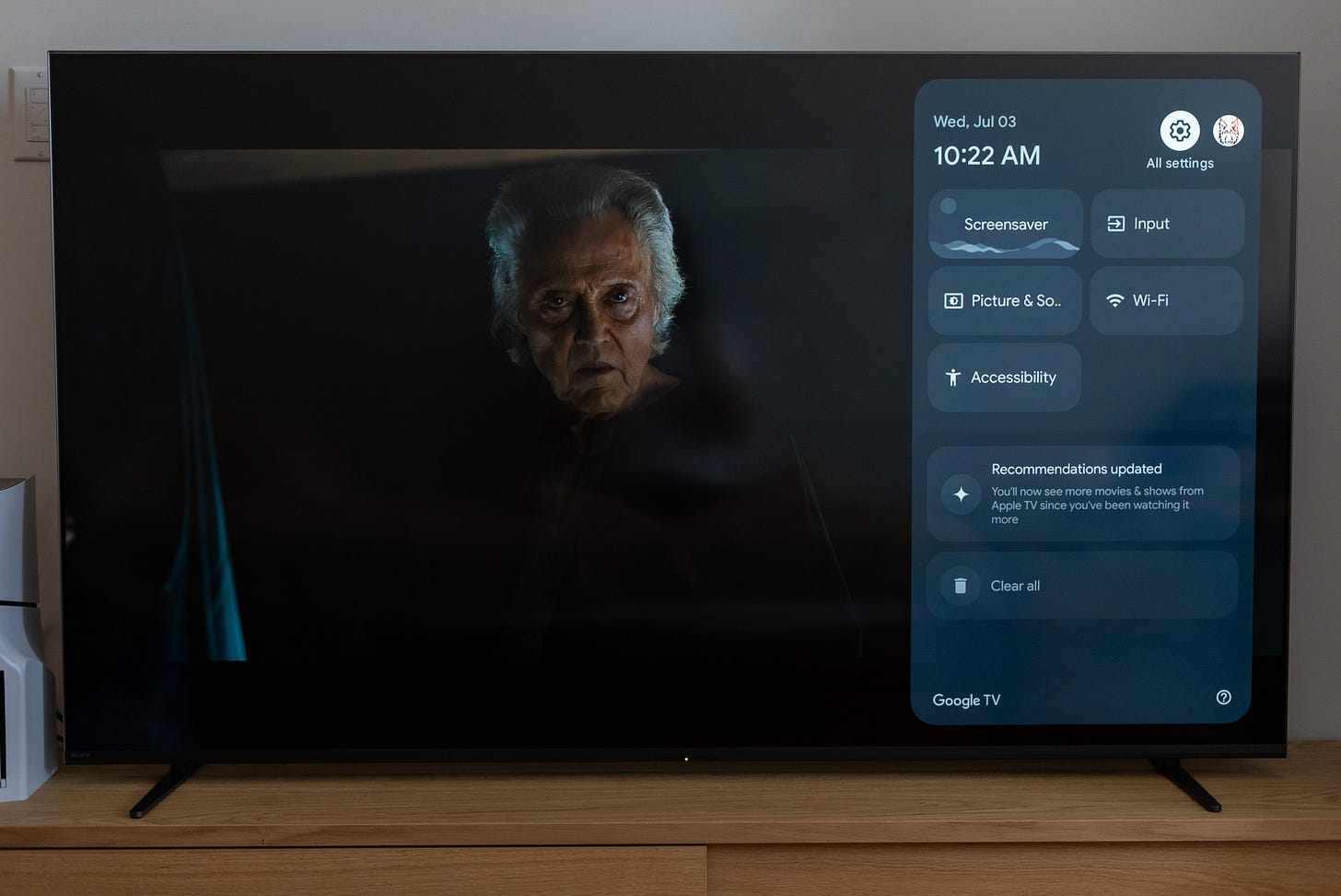
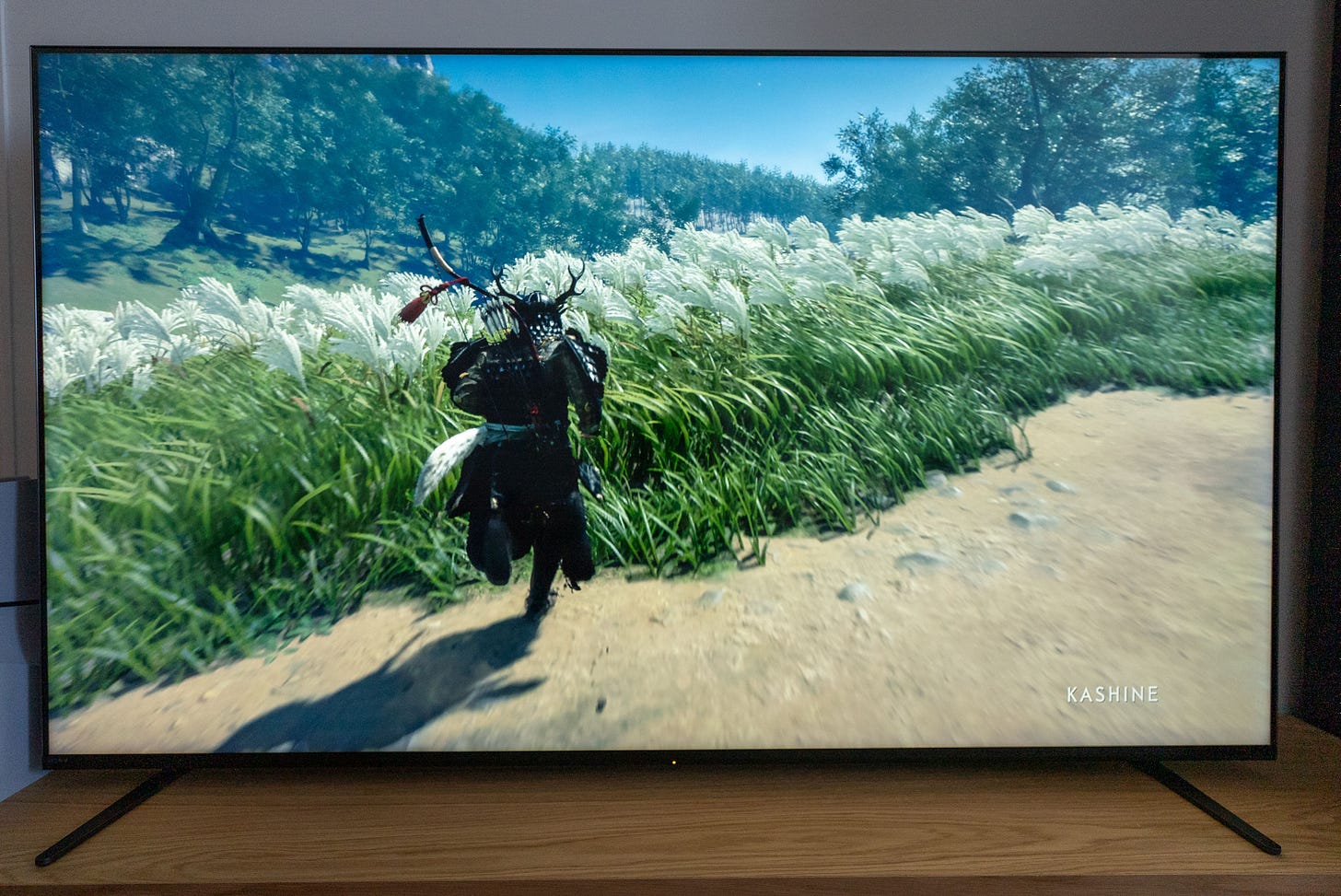
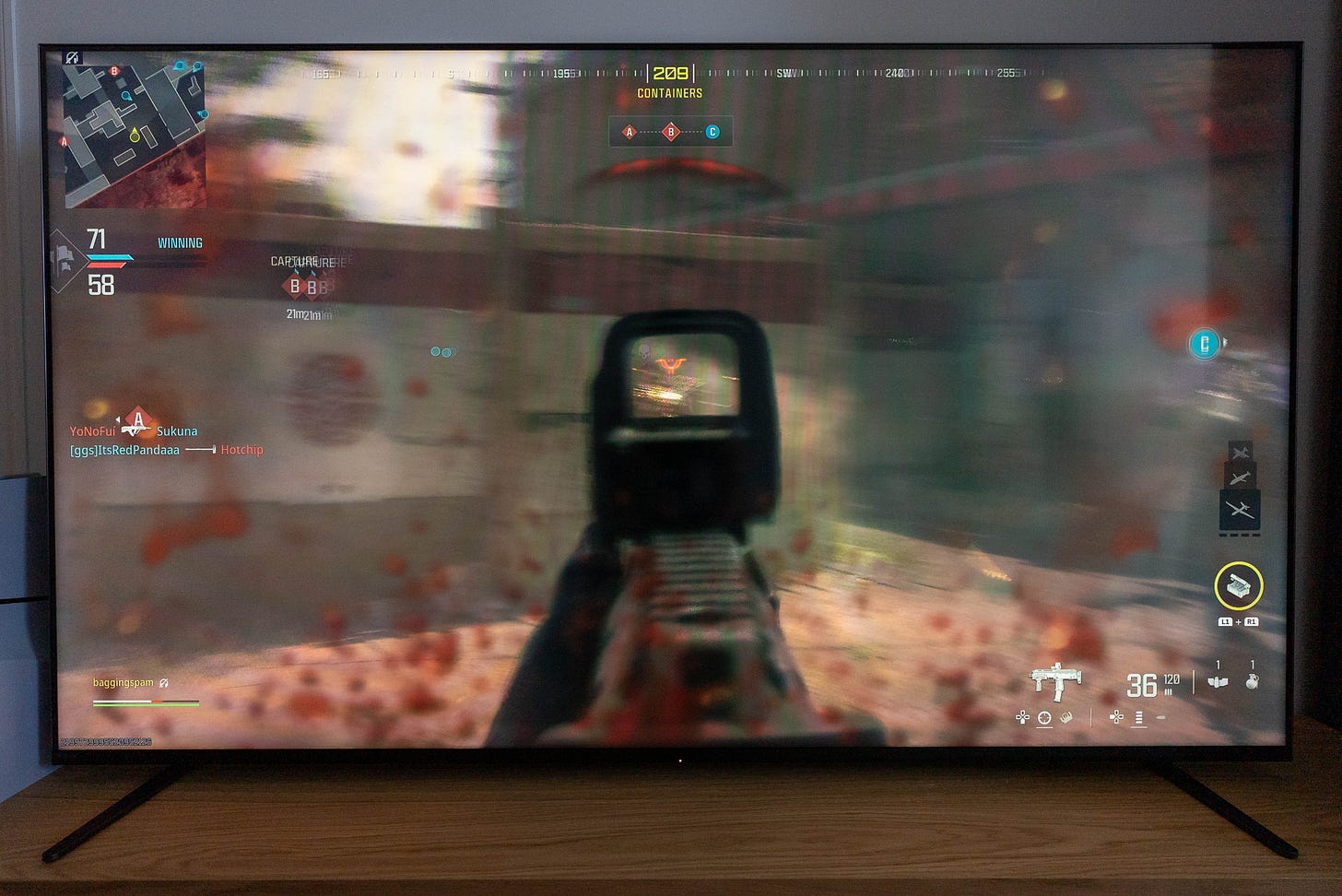
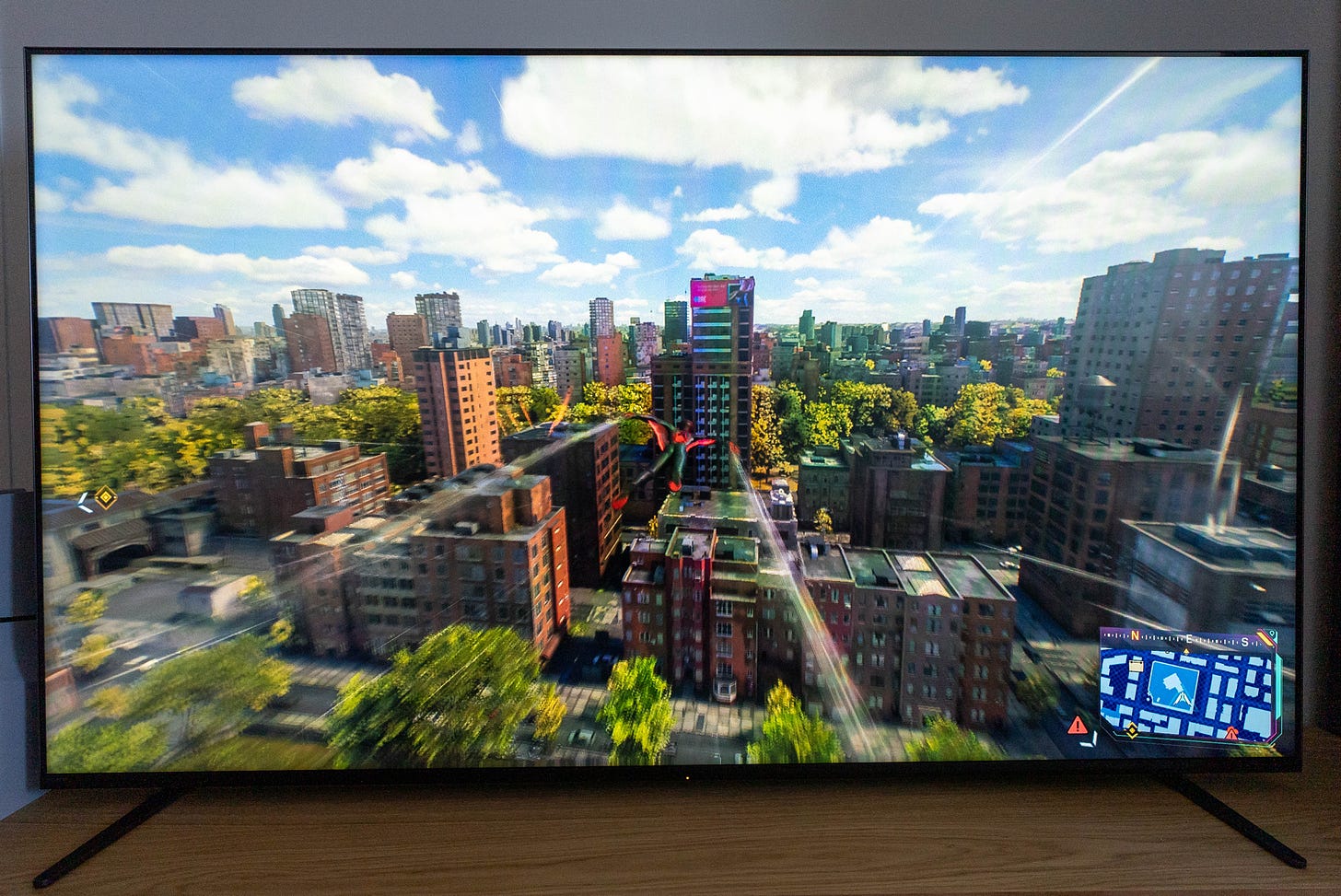
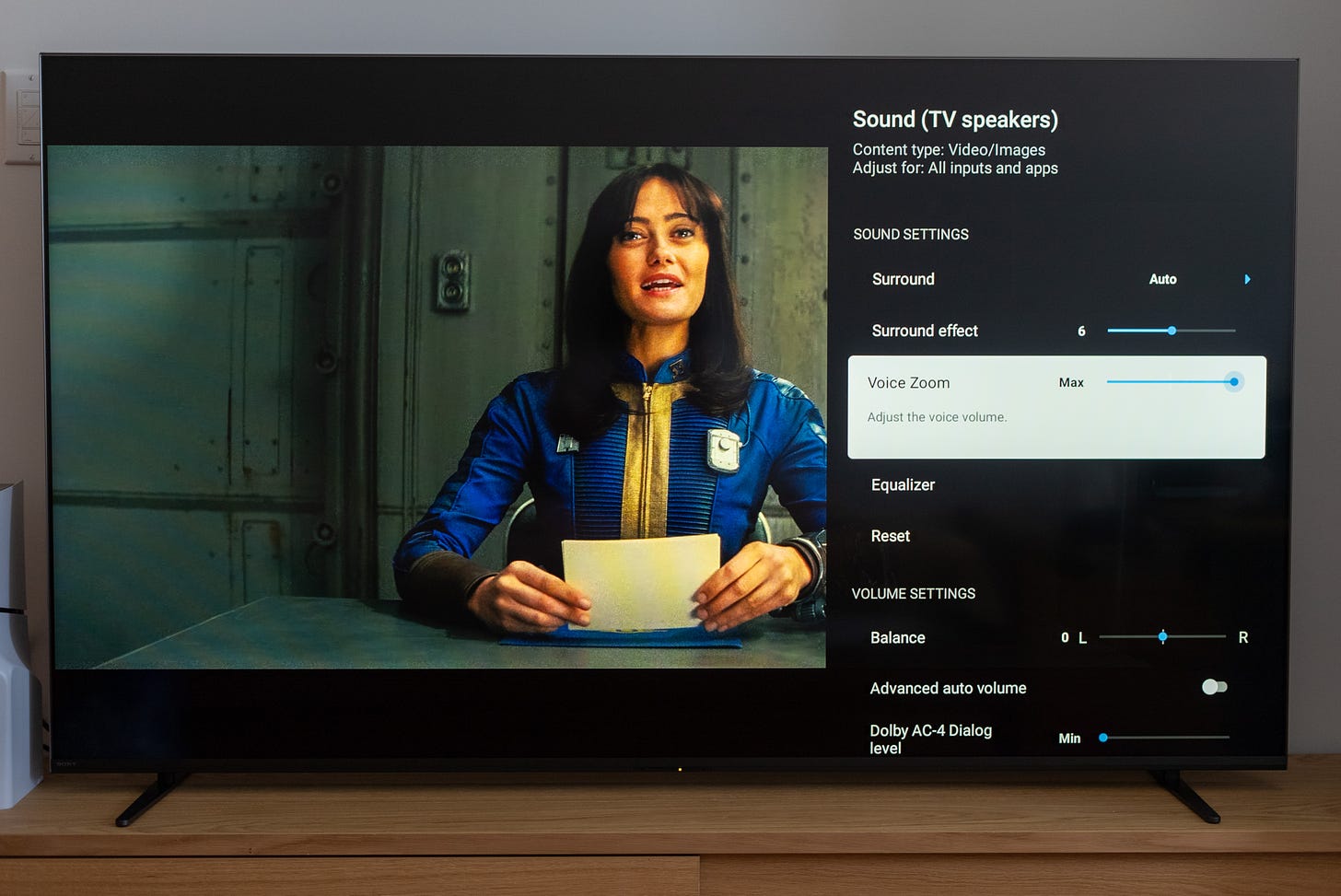
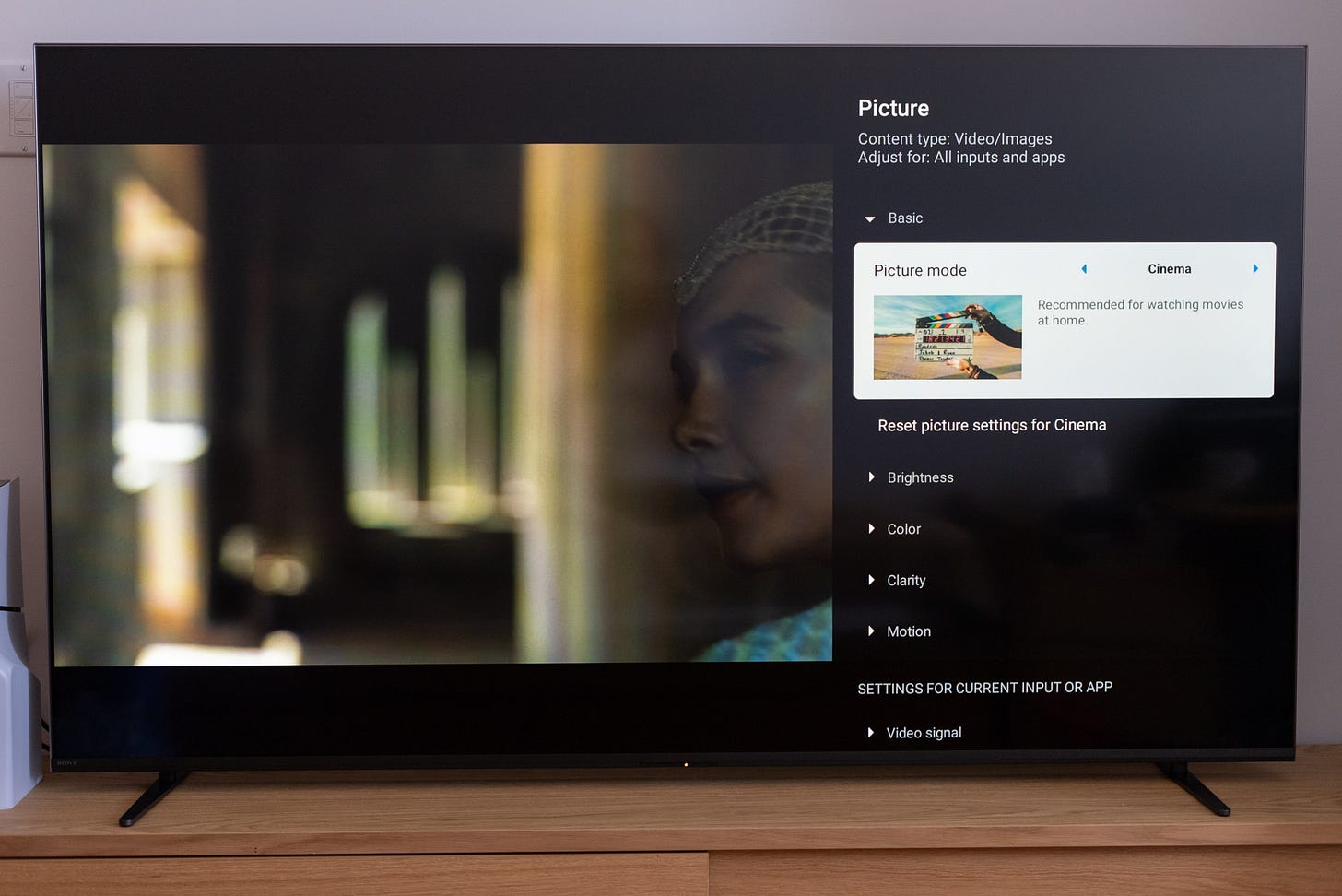



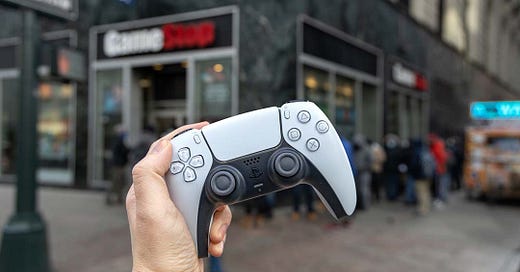

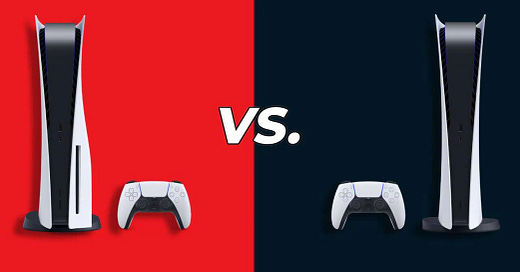


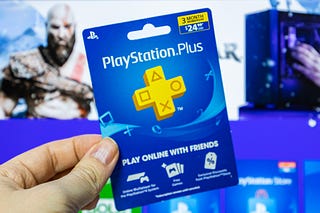
I'm back and forth with either buying (85 inch versions) of the Sony X90L, the B7, or the Samsung QN90. I was leaning to the X90L, but have now read a ton of horror stories about the screen being broken during delivery or sometime afterward. Any thoughts regarding which one. Is the Mini-Leds worth the increase in price over the X90L?
Your review is spot on !! I owned a Samsung q90c before this and the Sony is far superior except for the viewing angles .